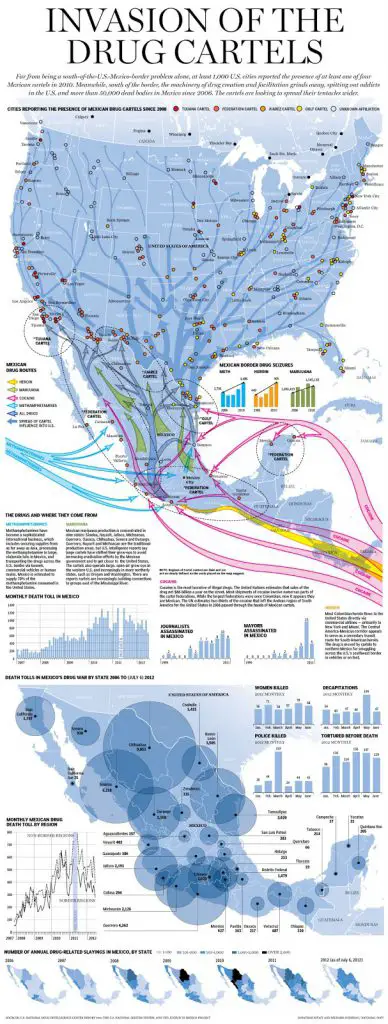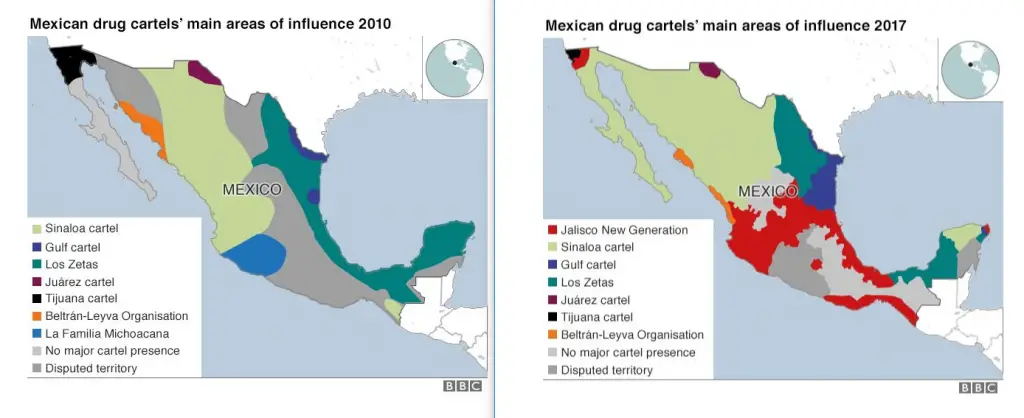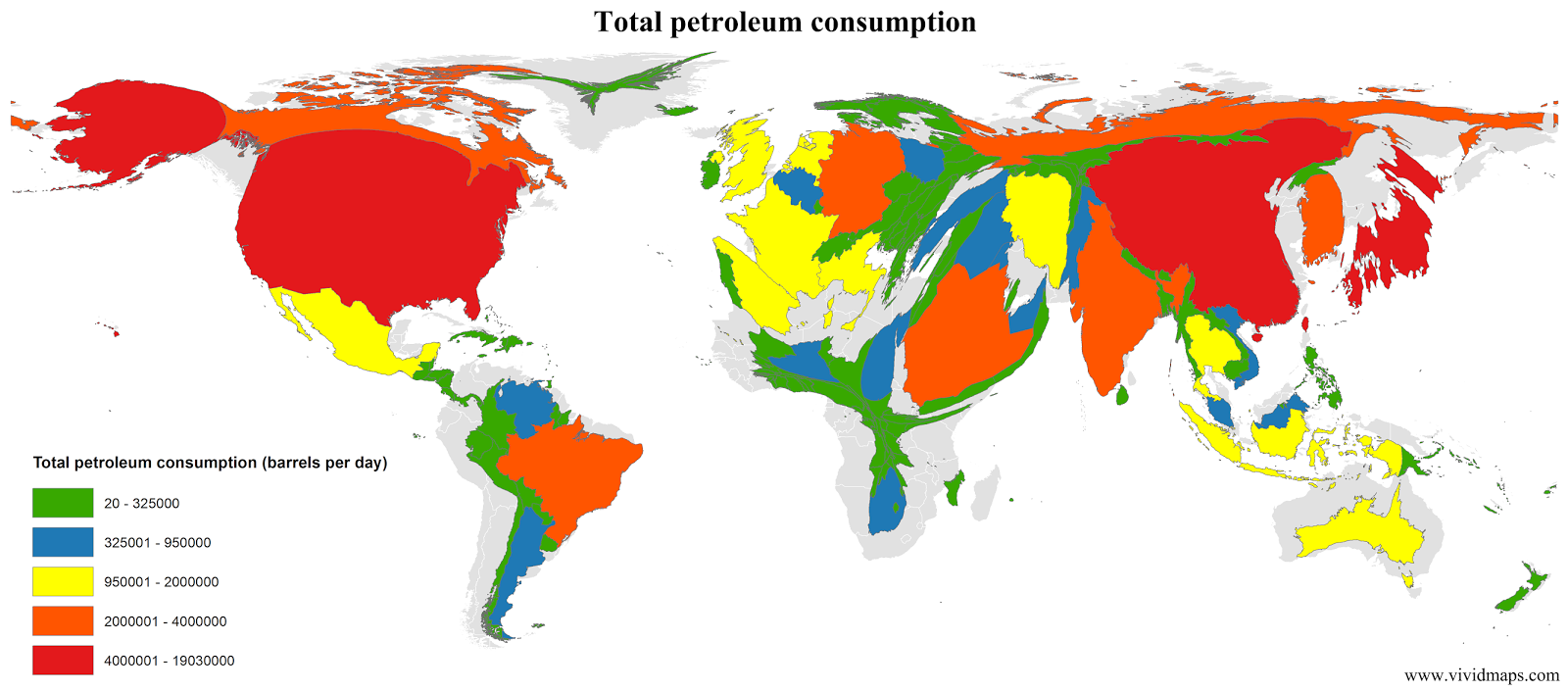Invasion of the drug cartels
Far from being a problem confined to areas south of the U.S.-Mexico border, drug cartels have a pervasive and far-reaching presence in North America. In 2010, at least 1,000 U.S. cities reported the presence of at least one of four major Mexican cartels. These criminal organizations extend their influence deep into the United States, exacerbating the drug addiction crisis and contributing to violence and instability.
The map poster below was created by Jonathan Wain and Richard Jonson fore National Post.

The Machinery of Drug Creation
South of the border, the drug trade’s machinery operates relentlessly. Mexican cartels are not only the primary producers and distributors of narcotics but also play a significant role in the cultivation, manufacturing, and smuggling of illegal substances into the U.S. This illicit industry has devastating consequences, both in terms of human lives and social stability.
Methamphetamines
Methamphetamines have become a complicated international business, which includes securing supplies from as far away as Asia, preparing the methamphetamine in large, elaborate labs in Mexico, and transporting the drugs across the United States border via tunnels, commercial transports or human mules. Mexico is estimated to supply 70 percent of the methamphetamine consumed in the U.S.
Marijuana
Mexican marijuana production is concentrated in 9 states: Sinaloa, Nayarit, Jalisco, Michoacan. Guerrero, Oaxaca, Chihuahua, Sonora, and Durango. Guerrero, Nayarit, and Michoacan are the traditional production regions, but U.S. intelligence records say large cartels have shifted their grow-ops to avoid increasing elimination attempts by the Mexican government and to get closer to the U.S. The cartels also operate large, open-air grow ops in the western U.S. and frequently in more northerly states, such as Oregon and Washington. There are reports cartels are increasingly building relationships to groups east of the Mississippi River.
Cocaine
Cocaine is the most profitable illegal drugs. The United Nations estimates that sales of the drug net $88-billion a year on the street. Most shipments of cocaine involve numerous parts of the cartel federations. While the largest federations were once Colombian, now it appears they are Mexican. The UN estimates 2/3 of the cocaine that left the Andean area of South America for the U.S. in 2008 passed through the hands of Mexican cartels.
Heroin
Most Colombian heroin flows to the U.S. straight by commercial airlines – primarily to New York and Miami. The Central America-Mexican corridor appears to serve as a secondary transitway for South American heroin. The drug is moved by cartels to northern Mexico for smuggling across the U.S.’s southwest border in transports or on foot.
The Toll on Lives
The human cost of the drug trade is staggering. Since 2006, over 50,000 people have been killed in Mexico due to cartel-related violence. The death toll includes victims of turf wars, clashes with law enforcement, and civilians caught in the crossfire. The violence is a direct result of the cartels’ ruthless pursuit of control and profit.
Spreading Their Influence
The cartels are not content with their current territories and are continually looking to expand their operations. Their tentacles reach into various aspects of society, from local governments and law enforcement to businesses and communities. This expansion poses a significant threat to the safety and security of both Mexican and U.S. citizens.









The cartels are working hard to reelect Trump, I see.
Black Markets, prohibition, are profit centers for organized crime, bureaucrats and petty criminals. Creating them is stupid.
Would be interesting to see volume from Canada compared to cartels, especially for northeast.